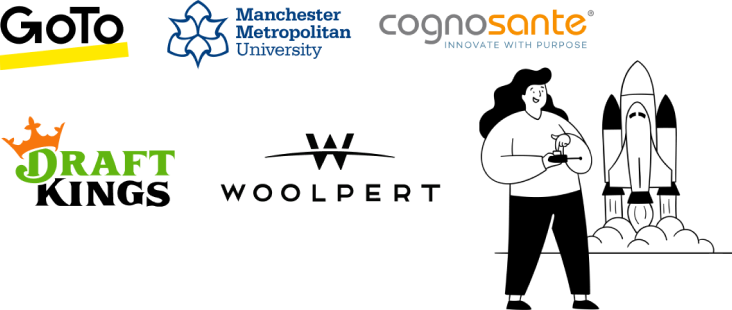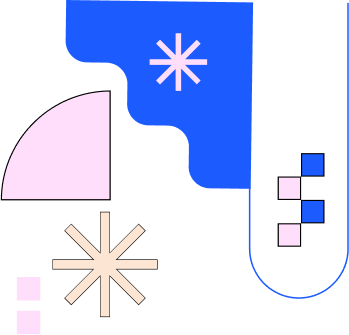
Burned Out Employee Support Teams? Here's How Automation and GenAI Can Help

Do you think burnout is synonymous with call center agents only? No, that's a half-truth. ITSM or IT helpdesk employees experience burnout at a higher rate.
IT helpdesk burnout may not technically be a medical condition.
It is an occupational or work-related condition that can cause extreme physical or emotional stress on your helpdesk or service desk employees.
According to The 2022 State of Remote Support Market Trends Report from Splashtop,65% of IT helpdesk teams report an increase in team members facing unsustainable stress levels.
Burned-out employee support teams are very common at helpdesks, especially with the rising phenomenon of hybrid or remote teams.
The need to constantly look for IT support to get help and be able to work their best adds to the growing volume of tickets.Compounding the stress for helpdesk teams are live chats and phone calls.
Besides implementing the best work policy for helpdesk teams, investing in your agents pays off in the long run.
Generative AI and automation are at your rescue. Helpdesk modernization derives the best value from Generative AI investments by allowing you to boost agents’ engagement and morale and elevate their experiences.
What is Generative AI for IT helpdesk?
GenAI for IT helpdesks can refer to applying LLMs or GPT to automate communications and collaboration to ask questions, get answers, and efficiently speed up agent assistance to mitigate service requests or problems.
Generative AI is an advanced AI version that uses the power of massive natural language processing to simplify language understanding and enhance human-like response generation and content creation.
These two unique GenAI abilities can allow helpdesks to reduce agent burnout by—
You can derive significant value from Generative AI and automation for your helpdesks as you efficiently prevent agent burnout or take your employees out of extreme fatigue or emotional stress. (We’ll explore this more later in this article.)
1. What is IT helpdesk burnout?
IT helpdesk burnout refers to agents' deep fatigue and exhaustion from excessive work pressure in handling tickets, addressing user calls, or continuously following up with pending tickets.
IT helpdesk burnout occurs with the onset of stress, which continues to compound as agents become overworked due to rising helpdesk tickets.
Anxiety, depression, and irritation are common signs of IT helpdesk burnout. Long-term sick leaves, frequent breaks from the desks, and attritions are common consequences of burnout at helpdesks.
A broken ticketing system or clunky helpdesk software is one significant reason for helpdesk burnout.
2. Why do employee support teams get burned out?
Since the work scenarios changed post-COVID-19, the number of helpdesk calls has risen exponentially. Employees seek helpdesk support for many issues—
Alongside complex issues, helpdesk agents also manage common issues, giving them little time to spare and focus on self-being.
According to the same report by Splashtop,
3. How do burned-out employees impact your business?
Employee burnout is a severe work-related issue, with IT leaders paying little attention to it.
In addition to having to work with fewer team members, helpdesk burnout has too many business implications—
Low CSAT
Agents are fatigued, and they continue to follow the practice of no-shows. Tickets keep piling up in queues, and employees wait for days for a resolution, leading to poor user experience and frustration.
Poor helpdesk performance
Helpdesk agents are fatigued, and manual work contributes to error-prone outcomes for end users. Resolutions see a dip, and ticket escalation increases for agents.
Rehiring for new agents
Agent attrition is a common scene in the helpdesk. IT leaders or managers are on a continued search for new agents. However, it is a lengthy process, which increases agent burnout until a new hire is onboarded.
Lost revenues
Untimely resolutions lead to productivity losses, requiring companies to pay for missed hours of operations and missed business opportunities. Besides, IT leaders must allocate funds to retrain new hires, which puts quite a strain on balance sheets.
4. How can you address employee support team burnout with Generative AI and automation?
Helpdesk burnout is a common phenomenon for service desk managers and leaders.
Generative AI and automation deliver multiple functions to helpdesk leaders reduce agent burnout and improve overall user experiences for ultimate business growth.
Here is what you can gain with Generative and automation—
Answer basic questions accurately
80% of IT support requests contain basic or common questions involving password resets or account unlocks. Generative AI can speed up responses to common queries by offering accurate information and mitigating downtime.
Knowledge accuracy and context remove ticket escalation and free agents from handling mundane tasks.
Streamline repetitive workflows
Knowledge GPT or Knowledge AI can easily automate responses for repetitive workflows such as VPN settings, connectivity, software installs, hardware patching, and other IT support tasks. helpdesk agents can save time and engage in creative work to stay energized and motivated.
Deploy RAG-based self-service
The best thing about Generative AI is that it can connect with third-party data repositories or company-wide proprietary data systems to facilitate RAG search. Your employees can find information and get help to do their best work. This effectively eliminates the involvement of agents and the number of tickets for them.
Deliver real-time responses
A Generative AI-powered helpdesk can seamlessly allow agents to retrieve information from previous interactions and get the real-time context of a case. Also, GenAI generates AI responsesto suit user queries. With added clarity and handy AI suggestions, agents can deliver accurate responses, solve problems, and improve user experience.
Reduce MTTR for common questions
GenAI can summarize lengthy knowledge articles into consolidated responses. It dramatically reduces the time needed to read lengthy articles and fetch important answers to solve an issue autonomously. Employees who remain calm and patient with their search are less likely to bother agents.
Help agents retrieve knowledge
New agents can act independently in unexpected scenarios by asking the GenAI chatbot to provide the necessary information. Generative AI can self-learn and provide contextual information from helpdesk interactions to help reduce wait times and improve CSAT.
Fetch better analytics and reporting for improvement
GenAI generates massive data points to facilitate advanced analytics and reporting. Pulling up these helpdesk interaction datasets, you can gain deep insights into agent performance. As a result, you can know which issues take longer for your agents to handle, including what remain unresolved. This gives you rich, actionable insights to improve your agents’ performance and ensure employee support.
5. Benefits of IT helpdesk empowered by Generative AI
A report by Deloitte says that 69% of agents surveyed agree that a positive employee experience can ensure their retention for as long as 3 years.
So, a helpdesk reduces employee burnout and can reap high-yielding benefits. Some amazing benefits for agents and businesses include,
High CSAT
Generative AI automation improves employee and agent satisfaction rates. Employees use self-service to get resolutions rapidly, while agents can speed up responses for ticket escalations using embedded RAG search.
Elevated helpdesk performance
Helpdesk queries find answers from LLM-powered knowledge repositories. Users get contextual answers, which limit errors and prevent ticket escalations to the higher tiers.
Reduced agent attrition
Automation and GPT knowledge improve information sharing and facilitate a unified knowledge repository for everyone, reducing wait time and faster response time. This gives agents time to relax, be creative, and be loyal to their responsibilities, allowing IT leaders to retain agents for longer and avoid rehiring. It also reduces training costs.
Increased revenues
Downtimes can have minimal impacts, as employees find information and resolve problems twice as fast. As agent involvement decreases, employee productivity increases, improving customer experience and keeping revenues flowing.
Improved NPS
Your helpdesk agents love what they do, and they work with a powerful and modern ITSM platform like GenAI-driven chatbots. With AI suggestions, they can speed up responses and mitigate issues, which improves their experiences. This leads them to promote an amazing helpdesk culture in their community.
SLA compliance
Generative AI makes it easy to address and mitigate problems in a specified timeframe using automation and response generation. As MTTR reduces, agents can handle scenarios efficiently and comply with SLA guidelines.
6. How Workativ helps combat helpdesk burnout with Generative AI and automation
Workativ uses Generative AI properties or large language models within its conversational AI chatbots to improve employee self-service and speed up agents’ efficiency in handling and mitigating calls.
Workativ combines many features that align to empower agents, help them stay calm, and prevent burnout.
The following features work in their style to empower agents—
App workflow automation
Using Workativ’s app workflow builder, you can create simple or multistep workflows for common or cross-functional tasks. Agents no longer need to put manual effort into mundane tasks but can instead be engaged with high-value tasks.
Conversational AI platform
Whether it is a simple or company-specific question, Workativ provides a hybrid NLU experience—the combination ofconversational AI and RAG to elevate the self-service search experience and autonomous problem resolution. By decreasing the ticket volumes to the helpdesk, Workativ boosts agent satisfaction levels by helping them save time and reduce excessive workloads.
Knowledge AI
You can bring the magic of ChatGPT to your helpdesk chatbots by leveraging Knowledge AI, a powerful LLM component, to enhance search results. This allows you to use your knowledge bases and turn them into Generative AI chats, helping reduce MTTR. Your agents no longer need manual effort to triage and allocate a ticket to the right person. No extra mundane work!
Shared live inbox
Workativ provides comprehensive tools for agents via a shared live inbox feature to speed up their actions and help them avoid helpdesk pressure.
A modern helpdesk with a comprehensive set of tools can ensure convenience, flexibility, and comfort for agents as they continue to work to provide a resolution.
Workativ facilitates agent efficiency by providing the right tools to improve their performances, boost their engagement, and enhance their productivity, ultimately preventing burnout.
If you are interested in promoting agents' well-being and preventing helpdesk burnout, Workativ can help.
Try our free AI chatbots. You can also schedule a demo today with our sales experts.
7. FAQs
1. What is helpdesk burnout?
ITSM or IT helpdesk burnout is a condition of overwork by an agent, which eventually leads to poor mental well-being, physical strain, stress, and exhaustion.
2. Why does helpdesk burnout happen?
Most helpdesks work with legacy or broken ITSM platforms, which offer zero convenience and flexibility in dealing with tickets. This leads to service request tickets piling up in the queue, putting more pressure on agents to maintain KPIs. As a result, agents develop stress, gradually compounding to helpdesk burnout.
3. How can IT leaders prevent helpdesk burnout?
Modern technologies that offer agents a suite of tools can reduce response times, help handle more tickets, and free them from doing mundane or repetitive tasks, thereby reducing helpdesk stress.
4. How does Generative AI address helpdesk burnout?
Generative AI utilizes NLP and NLU capabilities to automate agents' tasks. It can automate ITSM responses, solve more common problems through LLM knowledge, and streamline common workflows to relieve agents from excessive work pressure.
5. What can Workativ do to help you combat burnout?
Workativ has LLM-powered conversational AI that turns into a powerful ChatGPT-like self-service to help solve common problems without any agent’s assistance. Besides, agents can use AI suggestions and AI summaries, gain visibility into helpdesk tickets, and seek help from fellow team members in unexpected scenarios to speed up resolution and gain peace of mind.
In this Blog


About the Author

Deepa Majumder
Deepa Majumder is a writer who nails the art of crafting bespoke thought leadership articles to help business leaders tap into rich insights in their journey of organization-wide digital transformation. Over the years, she has dedicatedly engaged herself in the process of continuous learning and development across business continuity management and organizational resilience.
Her pieces intricately highlight the best ways to transform employee and customer experience. When not writing, she spends time on leisure activities.

